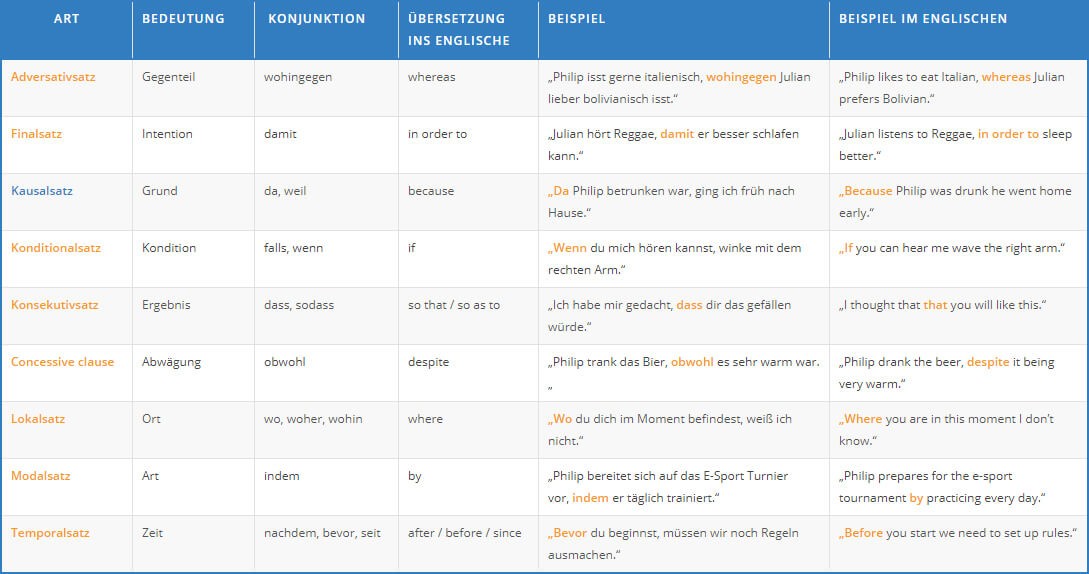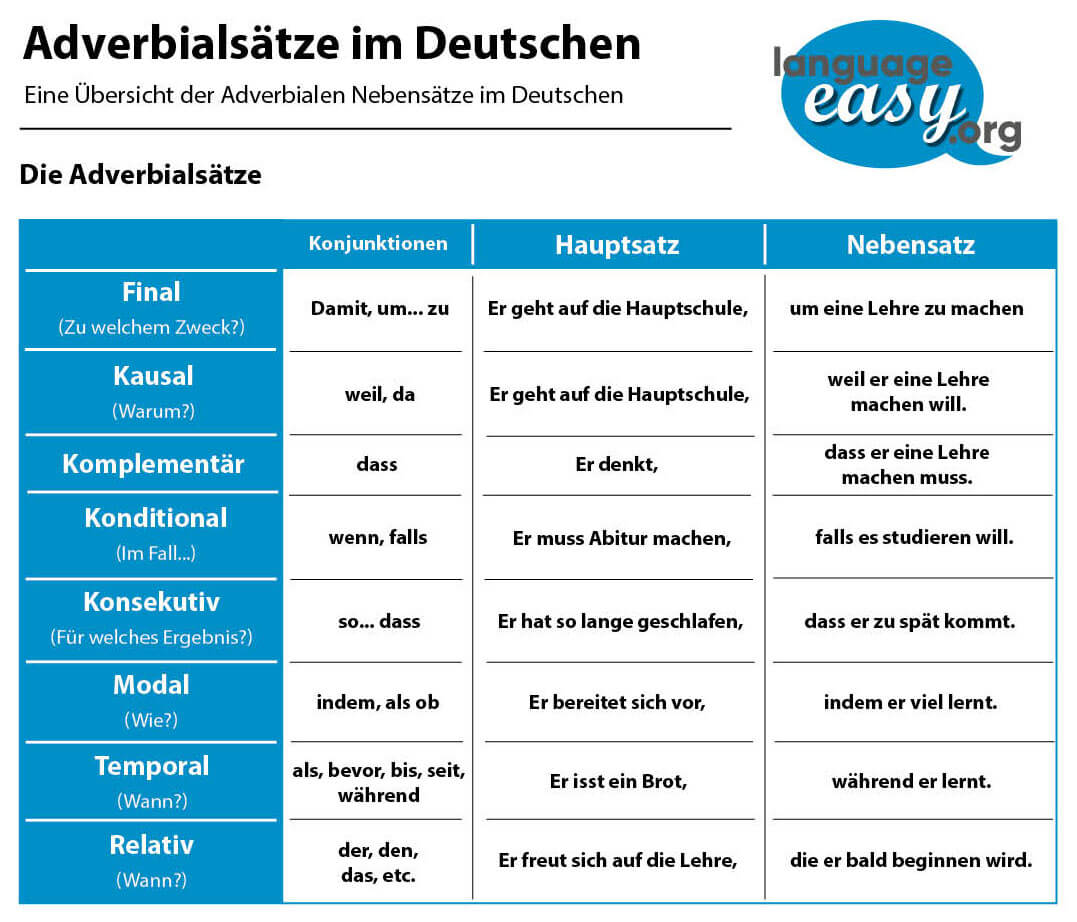German Adverbial Clauses
Adverbiale Nebensätze im Deutschen – Erklärungen und Beispiele
German Adverbial Clauses – Summary
Zusammenfassung
Adverbial clauses are normally initiated by subordinate conjunction, the subjunctions. You can differ between different types of adverbial clauses. So, just have a look at the following list of different adverbial clauses.
- Final clauses
- Causal clauses
- Conditional clauses
- Consecutive clauses
- Local clauses
- Modal clauses
- Temporal clauses
Welcome to language-easy.org! In this article we will have a look at a special type of German subordinate clauses, the German adverbial clauses. Well, although this type of clause might seem rather special to you, you will see that it is used quite frequently in the German language.
First of all, we will try to describe what a German adverbial clause actually is. After that, I’d like to present a list of different German adverbs that can introduce this type of German subordinate clause.
What are German Adverbial Clauses?
Was sind Adverbiale Nebensätze im Deutschen?
So, as a first part of this article we should describe this type of German clause. Well, as there are quite a few subordinate clauses, it might help you to distinguish them from others.
An adverb is a word that modifies the meaning of a verb, and an adverbial phrase is a combination of words that perform the same function.
Please, keep in mind that German adverbial clauses can be applied to actions as well as to nominal phrases and pronominal adverbs. So, here are some examples that can illustrate what I mean.
- “Ich ging nach Hause, während die Sonne unterging” – I went home as the sun was setting.
- “Damals, as Helmut Kohl Bundeskanzler war, kaufte ich mein erstes Auto.” – When Helmut Kohl was chancellor, I bought my first car.
- “Du wurdest gebohren, während Helmut Kohl Bundeskanzler war.” – You were born while Helmut Kohl was chancellor.
Additionally, these clauses can also replace a position or a pronominal adverb completely. So, have a look at the following examples.
- “… als Angela Merkel Bundeskanzlerin war…” Instead of “… damals, als Angela Merkel Bundeskanzlerin war…”
- “… wo die Sonne scheint…” Instead of “… am Himmel, wo die Sonne scheint…”
Hopefully, I could clear up what this type of adverbial clause is all about and how it is used. Now, I’d like to show you a list of the most important adverbs playing an important role introducing German adverbial clauses.
The Different Types of German Adverbial Clauses
Die verschiedenen Arten von Adverbialen Nebensätzen im Deutschen
So, here is a list that will show you different kinds of adverbs that introduce the different types of adverbial clauses. It includes all the necessary translation and is actually quite self explaining.
Types of adverbial clauses
The following table shows the different types of adverbial clauses in German including examples:

Some Interesting Facts about the German Language
Einige interessante Fakten über die deutsche Sprache
Uff… hopefully, you didn’t get stressed out too much by this rather specific type of German subordinate clauses. Well, here is something that might relax you… In the following, I’d like to present to you some important and interesting facts about the German language.
- German is the most widely taught third language across the world.
- German remains the language with the most native speakers in Europe.
- Germany, Switzerland, Austria, Luxembourg and Liechtenstein have German as the official language.
- “Donaudampfschifffahrtselektriz
itätenhauptbetriebswerkbauunte rbeamtengesellschaft” is the longest word to be published. It is 79 letters long. - The first printed book was in German.
- The first magazine ever seen was launched in 1663 in Germany.
- There are thirty-five dialects of the German language.
Exercises
Übungen
Finally, we have reached the last part of this article where you can prove the German skills you have just learned. In the following you will see some phrases that you should complete with the correct terms. Once you have filled all the gaps, just click on the “correct” button and you can see your errors and the correct results. Good luck and… auf Wiedersehen!



